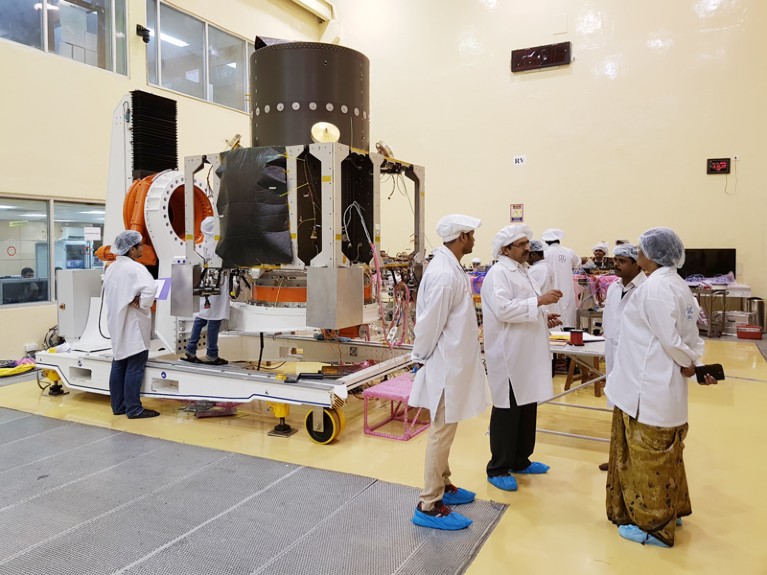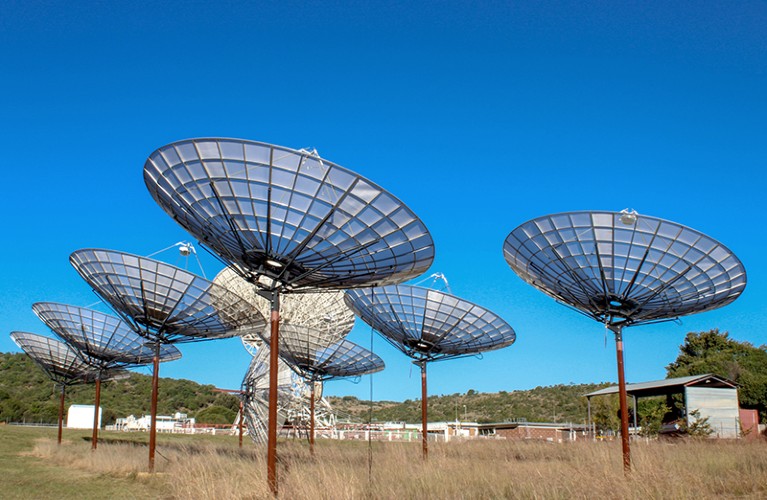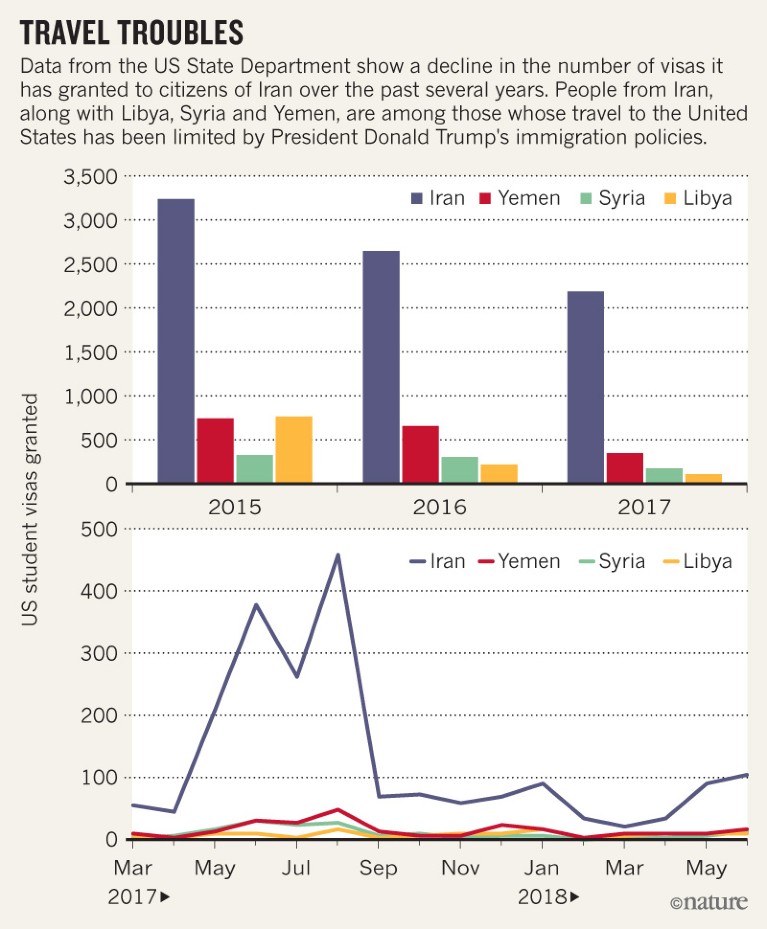SPACE
India’s Moon mission hits further delay The launch of India’s second spacecraft to the Moon has been delayed for the second time this year. Kailasavadivoo Sivan, chair of the Indian Space Research Organisation in Bangalore, told reporters on 12 August that the agency is aiming to launch Chandrayaan-2 on 3 January next year — although the mission has a lift-off window of any time between January and March. The original launch date was April this year, and had already been pushed back to October. Chandrayaan-2 will carry an orbiter that will travel around the Moon; a lander that will attempt India’s first controlled, or soft, landing; and a rover. Sivan said that there were several reasons for the latest delay, including changes to design of the lander. He said these changes had increased the weight of the spacecraft and therefore the amount of fuel needed to complete the mission, further adding to the delays.

India’s Chandrayaan-2 spacecraft will be sent to the Moon.Credit: Pallava Bagla/Corbis/Getty
Asteroid hunters A NASA-funded telescope network devoted to detecting space rocks that could crash into Earth will expand into the Southern Hemisphere, which lacks a large-scale asteroid-surveillance effort. The agency confirmed on 13 August that it will provide US$3.8 million over the next 4 years to support the construction and operation of two observatories south of the Equator. Researchers plan to build one observatory in South Africa, but are still deciding on a location for the second outpost. The facilities will join two existing telescopes, on the islands of Maui and Hawaii, as part of the Asteroid Terrestrial-impact Last Alert System (ATLAS), run by the University of Hawaii. The planned observatories will also detect comets, supernovae and other benign celestial objects.
EVENTS
Salk lawsuit Lawyers for the Salk Institute for Biological Studies went to court on 17 August in San Diego, California, asking a judge to narrow the scope of a gender-discrimination lawsuit filed by molecular biologist Beverly Emerson. Emerson alleges that systemic bias at the institute, in La Jolla, California, limited her pay and access to resources. The scientist, who filed suit in July 2017, also alleges that Salk’s decision to let her contract expire in December 2017 constituted retaliation. Salk, which disputes the allegations, settled two other gender-discrimination lawsuits earlier this month. The judge overseeing Emerson’s case will decide later this month which of the scientist’s claims will go to trial.
PhD protections Doctoral researchers at Germany’s Max Planck Society have issued a set of recommendations to tackle issues that they say make them vulnerable to abuses of power, such as steep management hierarchies and pressure to publish. PhDnet, a group that represents the society’s more than 5,000 doctoral researchers, published a document on 15 August detailing steps for preventing conflicts with supervisors, protecting early-career researchers, arbitrating problems and implementing consequences for offenders. Jana Lasser, a doctoral researcher at the Max Planck Institute for Dynamics and Self-Organization in Göttingen, Germany, and spokesperson for PhDnet, says that the group had been crafting recommendations for the treatment of PhD researchers, but work intensified after press reports earlier this year detailed allegations of bullying against a Max Planck institute director. Lasser says that under the society’s rules, PhD supervisors are often solely responsible for deciding a doctoral candidate’s contract duration, pay and publication activity, and this creates an imbalance of power.
POLICY
No extra oversight The US government plans to remove 40-year-old regulations mandating extra reviews of gene-therapy research conducted under the auspices of the National Institutes of Health (NIH). In a 16 August article in The New England Journal of Medicine, the directors of the NIH and the Food and Drug Administration (FDA) wrote that improved understanding of diseases, gene-delivery methods and safety risks mean that the FDA should be able to regulate gene therapies as they would any other treatment. The move follows a 2014 Institute of Medicine committee recommendation that only “exceptional” gene-therapy products need an extra review and approval by an NIH advisory committee. That advisory panel was originally chartered in 1974 to advise the NIH director on emerging biotechnologies.
FACILITIES
Africa radio array South Africa has given the green light to a 70-million-rand (US$4.8-million) radio-telescope project that will study two cosmic mysteries: ultra-powerful events of unknown cause called fast radio bursts, and dark energy, a force that is accelerating the Universe’s expansion. Construction on the Hydrogen Intensity and Real-time Analysis eXperiment (HIRAX) will begin next year in the Karoo desert. The region already hosts the 64-dish MeerKAT array. HIRAX will initially comprise 128 dish-like elements (pictured, the first few dishes), which together act as a single radio telescope. It will probe the characteristics of the Universe’s dark energy 7 billion to 11 billion years ago, and researchers hope that it will also locate fast radio bursts in their host galaxies for the first time. The telescope will be a Southern Hemisphere counterpart to the Canadian Hydrogen Intensity Mapping Experiment, which detected its first fast radio burst last month. HIRAX, funded by South Africa’s National Research Foundation and the University of KwaZulu-Natal in Durban, will be expanded to 1,024 dishes by 2020.

The first few dishes of the HIRAX telescope in South Africa’s Karoo desert.Credit: Kabelo Kesebonye, HIRAX Team
PEOPLE
Brain-project chief The executive director of the European Union’s ambitious — but contentious — Human Brain Project (HBP) has left his post after a disagreement with the institution that coordinates the initiative. The 10-year, €1-billion (US$1.1-billion) project aims to simulate the human brain using computers, and is a flagship science initiative of the EU. In a joint statement on 16 August, Chris Ebell and the HBP’s coordinating institution, the Swiss Federal Institute of Technology in Lausanne, said that they had decided to “separate by common agreement” following “differences of opinion on governance and on strategic orientations”. Ebell became director of the project in 2015, after the HBP disbanded its small executive committee in favour of a 22-member governing board. The HBP, which involves more than 100 partner institutions, had been criticized since its inception in 2013 by some neuroscientists for its scientific direction, its complicated structure and the lack of transparency surrounding its funding decisions.
Drug official sacked The former head of China’s drug regulator has been forced to resign from his current position, in the wake of a major vaccine scandal last month. The government announced on 16 August that Bi Jingquan, vice-director of the State Administration for Market Regulation (SAMR), had been dismissed, along with three other officials linked to the scandal. Last month, it was revealed that vaccine maker Changchun Changsheng Biotechnology, in Jilin province, had faked production data for several batches of rabies vaccine; it had also violated standards in making about 250,000 doses of a vaccine that protects against diphtheria, tetanus and whooping cough, potentially making the doses ineffective. Bi was head of the China Food and Drug Administration, from 2015 until the agency was merged into the SAMR in March. One of the agency’s responsibilities was to ensure safe vaccine production.
TREND WATCH
The rate at which the US government grants visas to prospective students from Iran has declined dramatically during President Donald Trump’s time in office, according to government data. And the visas that are granted take more time to arrive, according to a group of Iranian students that is petitioning the Trump administration to speed up the process. “We decided to come to the U.S. to do science with hopes of having equal rights to access information and education, regardless of race, color, and gender, even if that is just for a little while,” the students wrote in their petition to the homeland security and state departments, which has garnered more than 800 signatures since it was posted online in July 2018. “We have been feeling discriminated for a long time now.” Data from the US Department of State show that the number of visa approvals issued to Iranian students between March and June 2018 fell by 64% compared with the equivalent period last year. They also reveal that 687 Iranians received student visas between March and June of 2017, but only 249 were granted visas during the same period this year.

Source: US Department of State






